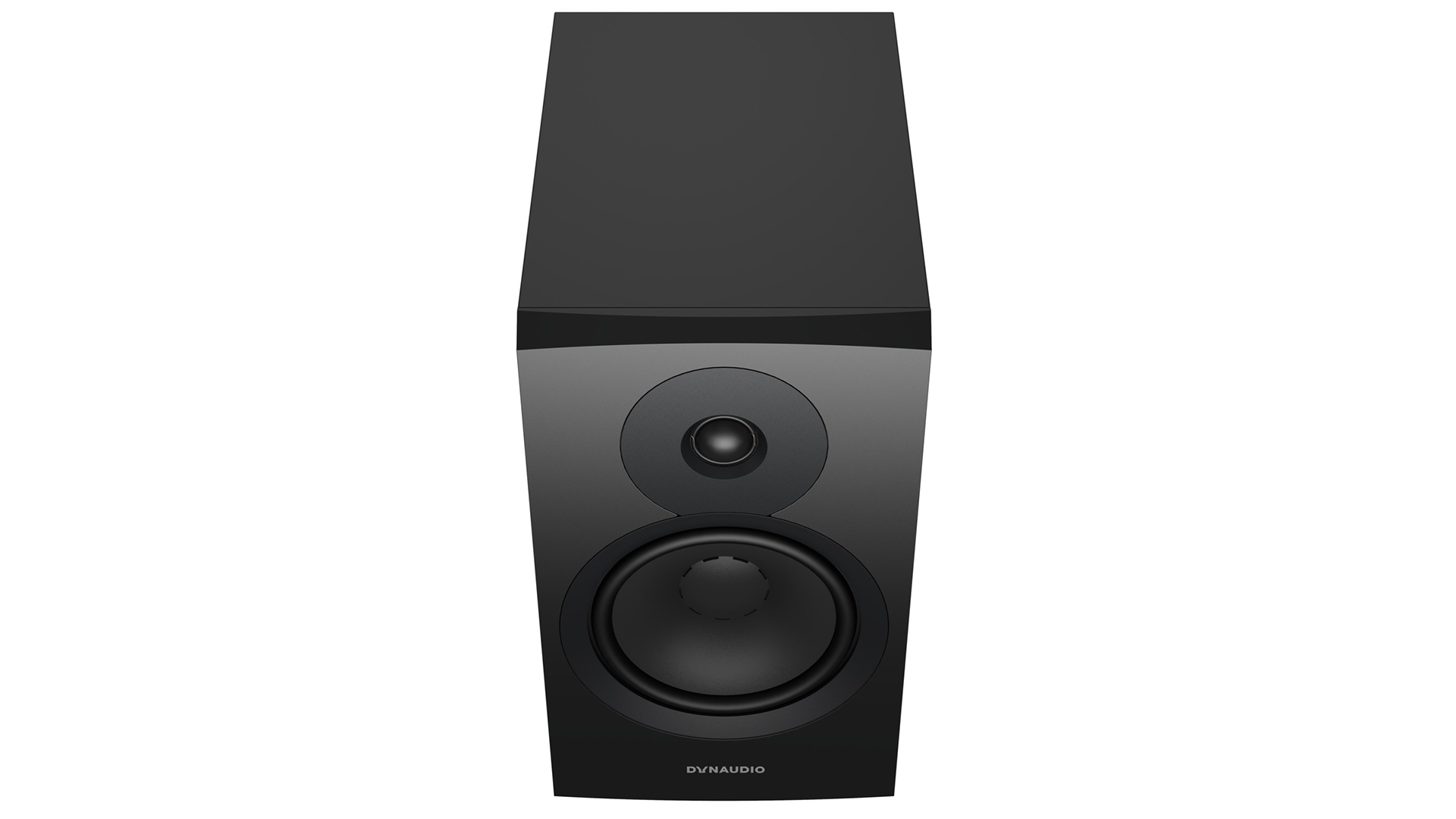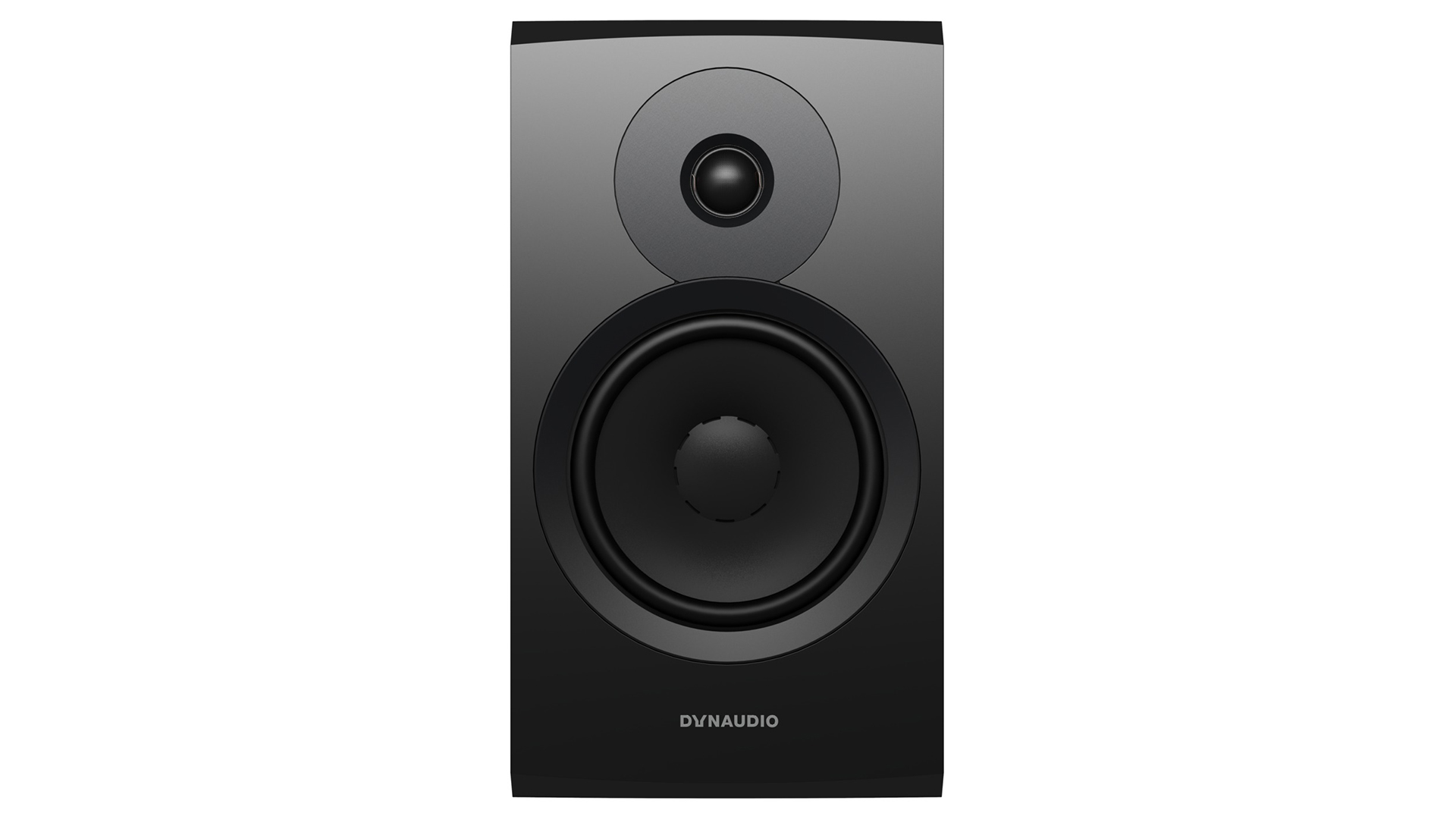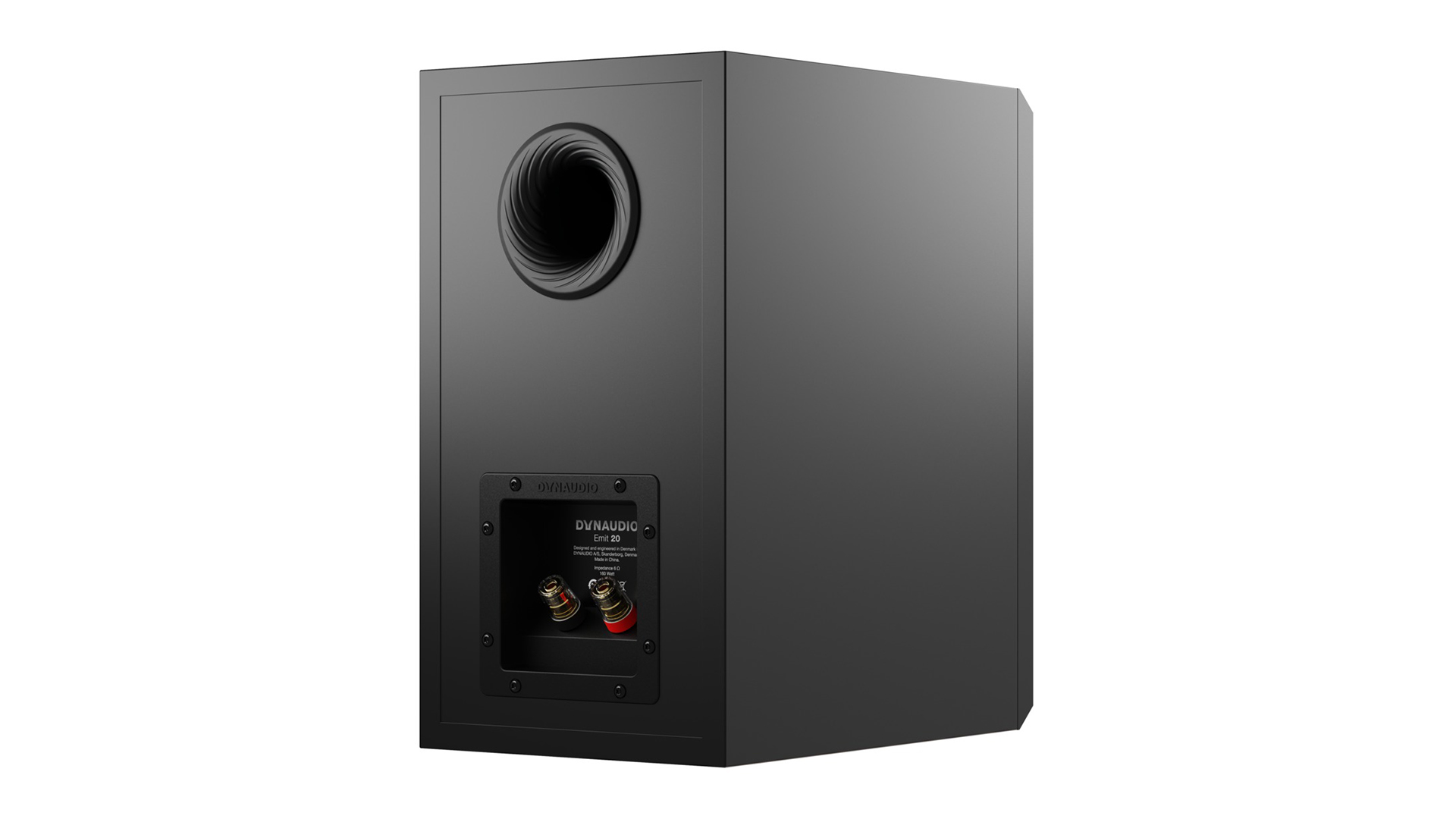What Hi-Fi? Verdict
The Dynaudio Emit 20 do some excellent things by standmounter standards, but they can’t quite match the very best at this level
Pros
- +
Impressive sense of scale
- +
Smooth, sophisticated delivery
- +
Good detail levels
Cons
- -
Dynamics can be bettered
- -
Presentation lacks a little cohesion
Why you can trust What Hi-Fi?
Trickle-down technology is a phrase that crops up in the world of hi-fi speakers quite a bit. Basically, it refers to technologies and design elements that tend to launch in more expensive speakers but then find themselves used in speaker ranges further down a manufacturer’s line-up. And when the technology works well, the benefits are obvious.
Dynaudio’s new Emit series of loudspeakers, on paper at least, benefit quite a lot from trickle-down tech. They’ve been born out of the company’s Evoke, Contour i and Confidence series. Even Dynaudio’s Core professional reference monitors have played a part in their design. That’s an impressive list of contributors and it only serves to heighten our expectations. After all, this Emit 20 standmounter has some big footsteps to fill. We were big fans of the previous generation, the Emit M20, and gave them five stars, not to mention a What Hi-Fi? Award back in 2016.
So just how great is the sum of the Emit 20’s parts?
Design

Unboxed and perched on top of a couple of suitably sturdy stands (each speaker weighs a hefty 10kg / 22.8lb), the Dynaudios look clean and classy, and build quality is solid. That smooth frontage is helped by the fact that any mounting screws are hidden from view and embedded in the surface of the speaker.
The only element of fuss is a slightly angled top edge of the front baffle. It’s a very subtle design element, though, and matches up with the top edge of the black magnetic grilles should you choose to use them.
Elsewhere the finish is up to the standards you’d expect at the money. The Emit 20 cabinets are made from 18mm MDF and available in three different custom laminate finishes: Black, White and Walnut.
The drive units might not be as eye-catching as those used in rival speakers like the KEF LS50 Meta, but as we’ve already mentioned, there’s plenty of impressive engineering above and beneath the surface.
The latest hi-fi, home cinema and tech news, reviews, buying advice and deals, direct to your inbox.
Taking it from the top, the Emit 20 start with a 28mm soft dome Cerotar tweeter lifted from the company’s Evoke series.

Sensitivity 86dB
IEC power handling 160W
Impedance 6 ohms
Frequency response 53Hz–25kHz
Speaker dimensions (hwd) 37 x 20.5 x 21.1cm / 8.1 x 14.6 x 12.3in
Weight 10.32kg / 22.8lb
A key feature of this tweeter is the Hexis inner dome, which sits just behind the main dome. It controls airflow back into a rear chamber which reduces unwanted resonances behind the fabric dome. According to Dynaudio, this helps to deliver "even cleaner, sweeter high-frequencies".
Beneath the tweeter, the Emit 20 use a one-piece 18cm MSP (Magnesium Silicate Polymer) mid-bass woofer (up from 17cm on the old M20), based on the one found in the Evoke series. The driver uses a dual-stacked ferrite-ceramic magnet system so its movement can be better controlled.
The mid/bass driver and tweeter work together using a custom-designed crossover from the same team behind Dynaudio’s Heritage Special and Core speakers. The Emit 20 use a hybrid first- and second-order design for the tweeter and woofer respectively.
On the back of the Emit 20 you’ll find single-wired connections and a new dual-flared bass-reflex port. A rear-firing port arrangement makes speakers more sensitive to placement, so we’d try to refrain from tucking the ’20s up against a rear wall or into the corners of a room. We also found a little toe-in towards our listening position helped give the stereo image greater focus.
Sound

Our first impression of the Emit 20 is that, for standmounters, they sound big and display an impressive sense of scale. We start with Kanye West’s Black Skinhead played through our reference Burmester 088/911Mk3 pre/power amplifier and Naim ND555/555 PS DR music streamer, and the Emit 20 immediately explode into life, producing a wide-open sound field and an impressive sense of scale. Each drum thwack sounds solid and hits with authority before the speakers delve down to retrieve the darker, more probing bass notes of the track. There’s good weight to low frequencies too, but the speakers never sound heavy-handed and leave plenty of space for textures to shine.
Venture higher up the frequency range and the Dynaudios show they’re also seriously sophisticated speakers. Highs are a particular highlight when we play the end credits from Pirates Of The Caribbean: On Stranger Tides. String instruments sound sweet and refined with it. You’re left in no doubt these are a serious step up from entry-level, budget speakers.
We switch electronics and swap out our Burmester amplification for something a little more price comparable. In this instance, it’s the Naim Nait XS3. We also move on to Mountains by Bat For Lashes and the Dynaudios surf that retro ’80s synth wave effortlessly. The highs, the lows, the sweeping vocal and the crisp chimes all pique our interest. The speakers dig out an impressive level of detail across the board and manage to balance analysis and entertainment. They’re capable of presenting you with plenty of information without sucking the life out of the music.

So, it’s all positives so far, but the longer you listen, the more apparent it becomes that something’s missing. All the elements are there and sound impressive in their own right, but when it comes to gluing them together and capturing the essence of the music, the Emit 20 can’t quite match the very best at this level. For example, the KEF LS50 Meta offer a completely different flavour of sound. This in itself is no bad thing, but the KEFs communicate the dynamics and the timing of the track in a slightly more natural and believable way.
Playing The Streets’ Blinded By The Light, the Dynaudios aren’t as convincing in the way they deliver Mike Skinner’s narration. As his night progresses and there’s a sudden shift in mood and panic sets in, the dynamic shift in delivery isn’t quite as apparent. The KEFs, on the other hand, just manage to communicate what’s going on more clearly.
Verdict
There’s a lot to like about the Dynaudio Emit 20. They’re capable of a fantastic sense of scale for a pair of standmounters, and some elements, especially that refined, sophisticated treble and midrange, are real highlights.
But when it comes to communicating a track in its entirety and piecing together all the different pieces of the sonic jigsaw, they don’t do it as effectively as the very best at this level.
SCORES
- Sound 4
- Compatibility 5
- Build 5
MORE:
Read our round-up of the best speakers, budget to premium
Check out our review of the KEF LS50 Meta speakers
Need to do some research? Here's how to choose the right speakers and get the best sound
What Hi-Fi?, founded in 1976, is the world's leading independent guide to buying and owning hi-fi and home entertainment products. Our comprehensive tests help you buy the very best for your money, with our advice sections giving you step-by-step information on how to get even more from your music and movies. Everything is tested by our dedicated team of in-house reviewers in our custom-built test rooms in London, Reading and Bath. Our coveted five-star rating and Awards are recognised all over the world as the ultimate seal of approval, so you can buy with absolute confidence.


